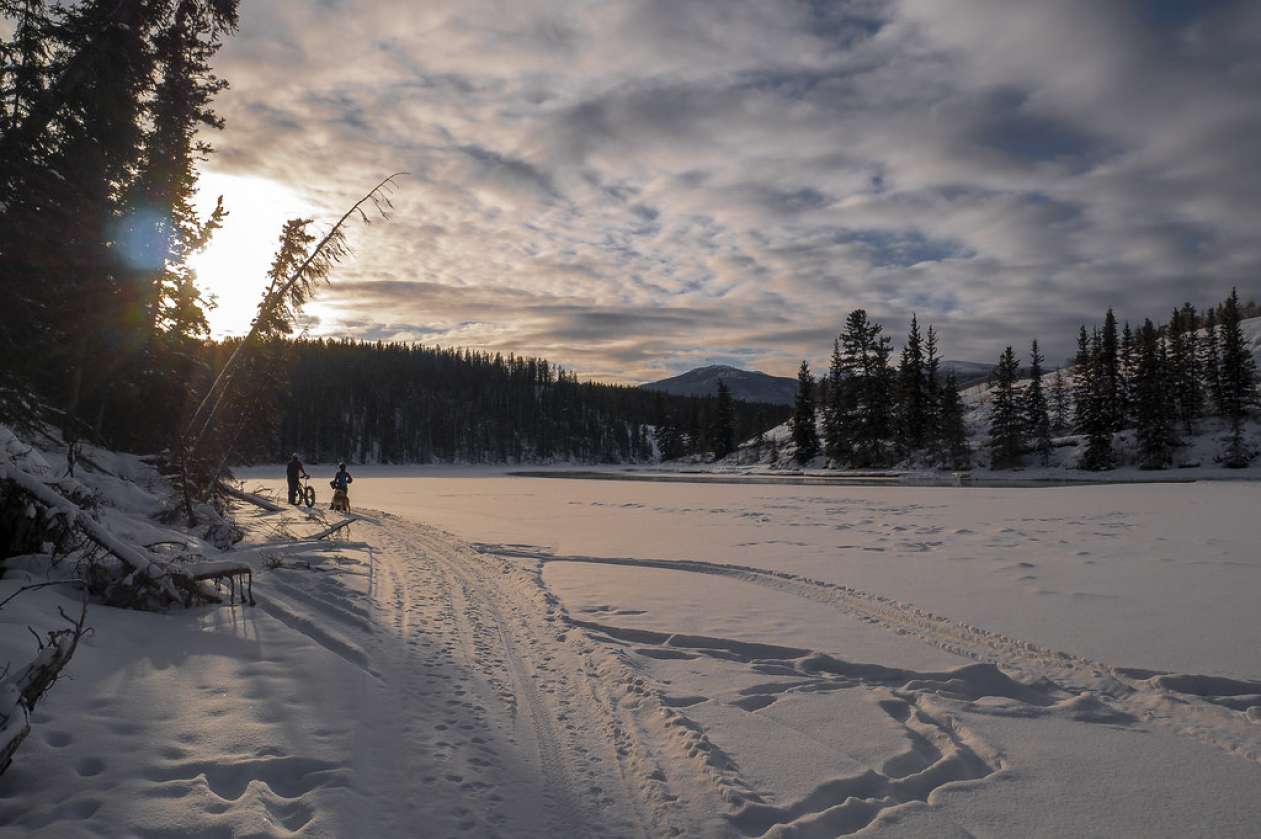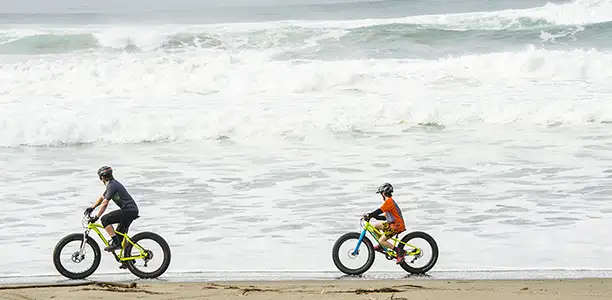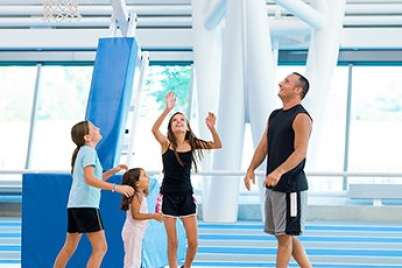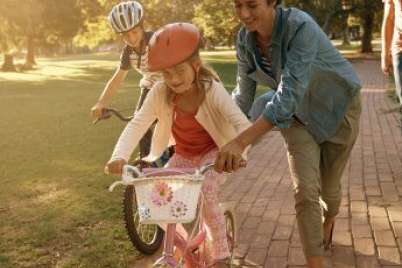
Fat biking: How to get your kids to ride cycling’s biggest trend
Fat bikes: you’ve seen them, and have probably wondered what the big deal is about these monster truck-like bicycles. With their balloon-like 10-centimetre-wide tires, fat bikes have turned heads in the cycling industry since the late 1980s, initially as a way for riders to enjoy the sport year-round.
Bike mechanics tinkered with the rims of mountain bike tires to create that famously fat footprint for endurance bike races in Alaska, where traction is critical over icy and snowy surfaces. Fat biking remained a niche sport for almost twenty years, until Surley, the manufacturer synonymous with the fat bike phenomenon, brought these bikes to the mainstream with the head-turning Pugsley.
Unfortunately, that did not include the school-age set. Luckily, that’s changing, with Canadian bicycle manufacturers bringing pint-sized frames to the market so kids can roll right alongside their parents.
Andrew McGregor, head of the internal product development and engineering department at Canada’s Specialized Bicycle Components, Inc., says that his company wanted to get more people riding, and bringing smaller frames to market meant more active families.
“With the explosion of interest in the adoption of fat biking as an addition to mainstream winter sports, we felt that not having a smaller version of our fat bikes would limit the family enjoyment of a sport we love,” explains McGregor.
But manufacturers have done more than just shrink the frames of their adult bikes to make their fat bikes kid-friendly. Features like chain guards (to keep your child’s snow pants from getting caught in the chain while they’re pedaling) and ultra-low standover heights (to make mounting the bike easier) add up to a bike dialed into an active child’s specific needs. Size-wise, most youth fat bikes will fit kids aged 9 and up.
Buying a fat bike is just like buying a traditional bike for your child, and parents should pay careful attention to the bike’s components, including brakes, saddle, chain, derailleur, and the like.
“Whenever you purchase any bike for kids, you need to remember the bike is a substantial percentage of their body weight. Pounds matter here, saving weight and having quality parts will allow sons and daughters to go further and ride longer, summer or winter,” advises McGregor.
Fat bikes are considerably more expensive than a traditional mountain bike (with most youth-sized bikes starting at $1,000), so you may want to try renting one from your local bike shop first to try it out.
But the good news is once you have your shiny new fat bike (rented or purchased), the cycling gear your child already owns is all they’ll need to enjoy a day out riding the wintry trails. As always, remember cycling safety first.
“A helmet is a must whenever you ride a bike, and fat biking is no different,” says McGregor. “Follow the same safety rules you do whenever you take your kids outdoors in colder weather. Check for frostbite, fogging goggles, or sunglasses and keep the kids in the middle of the group just in case someone falls off into deeper snow and needs help getting going again.”
For families looking for alternatives to traditional winter sports like skiing and hockey, fat biking is a fun option to explore. A child who is confident on a traditional bike and has solid handling skills will make the switch to a fat bike with ease. The hardest part will be getting them (and you) off the bike!
The first photo on this page, by Taiga Journeys Yukon, is licensed under CC BY-NC-SA 2.0.









This looks really fun! Would love to get my family started